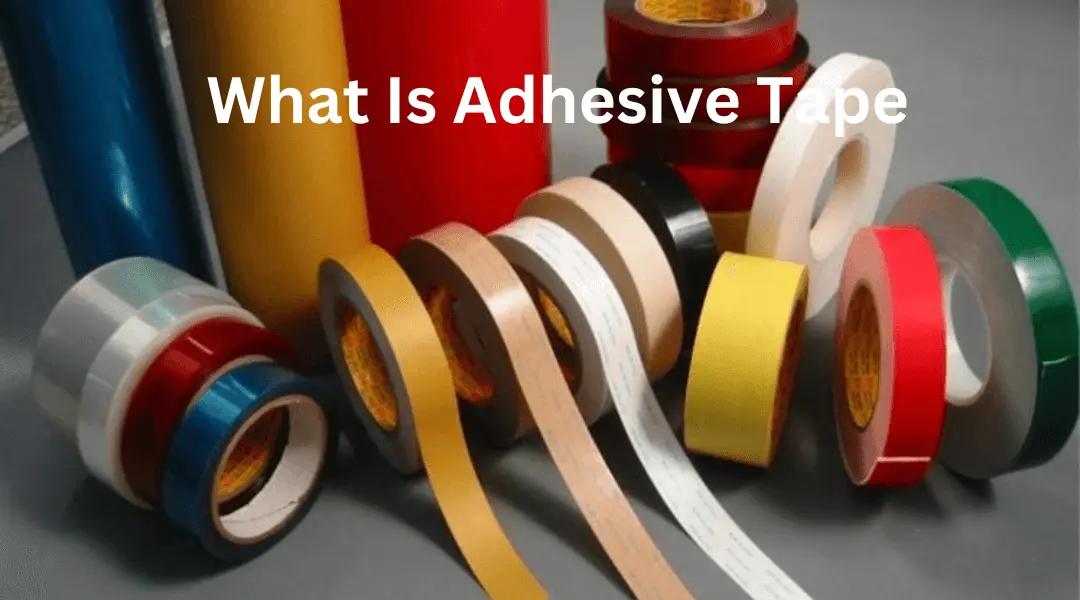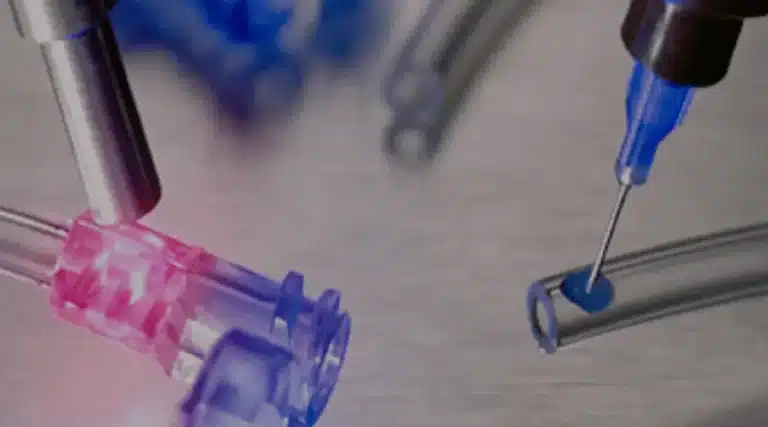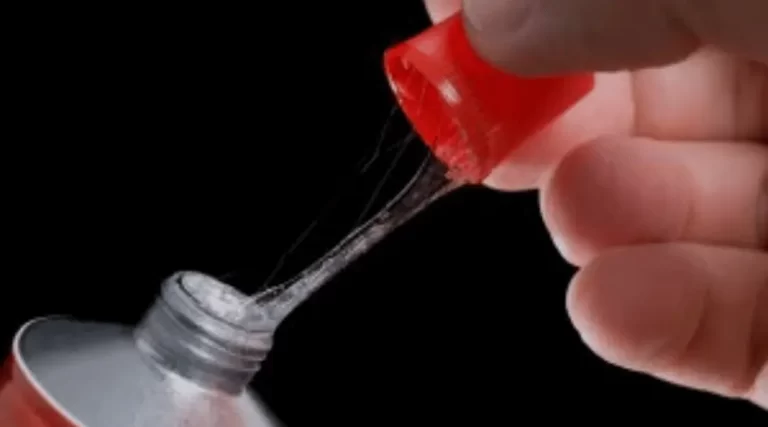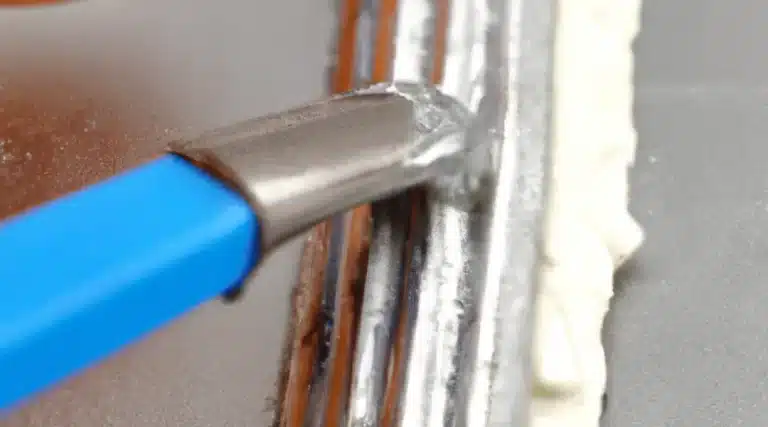Adhesive tape is a ubiquitous household item that is often overlooked but plays an essential role in our daily lives. According to a report by MarketsandMarkets, the global adhesive tape market is projected to reach $69.42 billion by 2022, with a compound annual growth rate of 5.6%. This statistic highlights the widespread use and importance of adhesive tape in industries such as packaging, healthcare, and automotive, among others.
Adhesive tape is a flexible material that has an adhesive coating on one or both sides. It is used to bind, seal, or fasten objects together. Adhesive tape comes in various forms, such as duct tape, electrical tape, masking tape, and double-sided tape, among others. Each type of adhesive tape has its specific properties and applications, making it a versatile tool in various industries and applications.
This article will explore the types of adhesive tape, their uses, and the pros and cons of using them.
Types of Adhesive Tape
The different categories of adhesive tape available in the market cater to varied application requirements and offer a range of features that can be employed in an array of settings.
Adhesive tape innovation has come a long way from the traditional masking tape to include duct tape, electrical tape, double-sided tape, and more.
Each type of adhesive tape is designed with a specific purpose in mind, whether it’s for packaging, insulation, or decoration.
Additionally, eco-friendly options are becoming increasingly popular, with manufacturers using sustainable materials and production methods to reduce their environmental impact.
With the wide variety of adhesive tapes available, it’s important to choose the right one for the job at hand.
Now, let’s discuss some common uses of adhesive tape.
Common Uses of Adhesive Tape
Adhesive tapes are versatile and have a wide range of uses across various industries. They are commonly used for sealing and packaging purposes in shipping and logistics.
In crafting and decorating, tapes are used to add finishing touches to creative projects.
Adhesive tapes are also utilized in medical and first aid settings for wound care and bandaging, as well as in electrical and plumbing applications for insulation and sealing.
Sealing and Packaging
Sealing and packaging are essential applications for a ubiquitous item that has revolutionized the way we secure and transport goods. Adhesive tape is widely used in the sealing and packaging industry, and its benefits and drawbacks have been extensively studied.
Here are four innovative uses for adhesive tape:
1) Double-sided tape is ideal for mounting photos or posters on walls without leaving any residue or damage.
2) Duct tape can be used to fix almost anything, from a broken chair leg to a damaged car bumper.
3) Packaging tape with a dispenser is a convenient and efficient way of sealing boxes and packages.
4) Masking tape is perfect for painting projects and can be easily removed without leaving any marks.
However, adhesive tape can also have some drawbacks, such as being difficult to remove from certain surfaces and losing its adhesion over time. Despite this, innovative uses for adhesive tape in art and design have emerged, showcasing its versatility and creativity.
Crafting and decorating are two areas where adhesive tape can be used creatively, as we will explore in the subsequent section.
Crafting and Decorating
Exploring the creative potential of adhesive tape beyond its traditional applications, the current section highlights the ways in which crafting and decorating can be enhanced by this versatile material, offering a glimpse of its artistic possibilities.
Adhesive tape has long been used in crafting, providing a simple and affordable way to create a variety of projects. From scrapbooking and card-making to DIY home decor, there are countless crafting ideas that can be brought to life using adhesive tape.
The material’s ability to stick to a variety of surfaces makes it a popular choice for decorating, as it can be used to add color, texture, and patterns to any project. Whether you’re looking to create a unique piece of artwork or personalize a gift, adhesive tape offers endless creative possibilities.
However, it’s important to note that not all types of adhesive tape are suitable for crafting, as some may leave residue or damage delicate surfaces. As with any project, it’s important to choose the right materials and use them in a safe and appropriate manner.
As we move into the next section about medical and first aid, it’s important to recognize the versatile nature of adhesive tape and its ability to serve a wide range of needs beyond just crafting and decorating.
Medical and First Aid
The medical and first aid section delves into the practical applications of the versatile material, demonstrating its ability to serve a crucial role in wound care and injury prevention. Adhesive tape is used extensively in the medical field to secure bandages, dressings, and other medical devices. It is an essential tool in wound care as it provides a secure and sterile environment for the wound to heal.
Medical professionals can use different sterilization techniques to ensure that the tape used is free from harmful bacteria. Adhesive tape is also used in injury prevention by securing joints and muscles during physical activity or sports. However, excessive use of tape can lead to skin irritation or allergic reactions. Despite its drawbacks, adhesive tape’s numerous benefits make it a valuable tool in the medical field.
The subsequent section about electrical and plumbing will explore how adhesive tape is used in these fields.
Electrical and Plumbing
Moving on from the medical and first aid uses of adhesive tape, it is essential to understand its relevance in electrical and plumbing repairs. Adhesive tape can be an effective tool in electrical safety, particularly in insulation and marking of wires.
In plumbing repair, adhesive tape can be useful in sealing leaks, reinforcing joints, and preventing corrosion. However, it is crucial to note that adhesive tape is not a long-term solution for plumbing repairs and should only be used as a temporary fix.
To avoid accidents and ensure long-lasting results, maintenance tips and safety precautions must be followed when using adhesive tape in electrical and plumbing repairs. With that said, let us now delve into the pros of adhesive tape.
Pros of Adhesive Tape
The sunny side of the street for adhesive tape is the advantages and benefits it offers, making it a valuable tool in various settings and situations. To emphasize this point, here are four pros of adhesive tape that make it a popular choice among consumers:
1) It is easy to use and can be applied quickly for immediate results.
2) It is versatile and can be used for a wide range of applications, from sealing packages to fixing broken items.
3) It is cost-effective and can be purchased at a reasonable price point compared to other adhesives.
4) It is convenient and portable, making it easy to carry and use on-the-go.
These benefits make adhesive tape a go-to option for many individuals and businesses alike. However, despite its advantages, adhesive tape does have its drawbacks.
Cons of Adhesive Tape
Adhesive tape has some drawbacks that users should be aware of when considering its use. Firstly, it may not be suitable for heavy-duty or long-term applications, as its adhesive strength may decrease over time.
Exposure to heat, moisture, or UV light can also compromise its effectiveness. Additionally, some types of adhesive tape may contain potentially harmful chemicals and VOCs, which could pose health risks to users.
Not Suitable for Heavy-duty or Long-term Applications
This product may not be the best choice for applications that require long-term or heavy-duty use. While adhesive tape is a versatile and convenient solution for temporary repairs and quick fixes, it may not hold up well under extreme conditions or prolonged use.
Here are some reasons why adhesive tape may not be suitable for heavy-duty or long-term applications:
1) Alternatives for heavy-duty applications, such as epoxy and welding, offer stronger and more reliable bonding.
2) Environmental impact is a concern since adhesive tape is not biodegradable and can contribute to waste and pollution.
3) The adhesive strength of tape may decrease over time, especially if exposed to heat, moisture, or UV radiation.
Therefore, it is important to consider the intended use and durability requirements when selecting adhesive tape as a solution. In the next section, we will explore how adhesive strength may decrease over time and its implications for practical applications.
Adhesive Strength may Decrease over Time
While adhesive tapes are ideal for various applications, it is important to consider its durability. The adhesive strength of the tape may decrease over time, making it less effective in holding things together. This decrease in adhesive strength can be caused by several factors, such as exposure to heat, moisture, and UV light.
The durability of adhesive tapes is greatly affected by the environment in which it is used, and it is important to choose the right type of tape for the specific application. In the next section, we will discuss how exposure to heat, moisture, or UV light can affect the adhesive strength of tapes.
Exposure to Heat, Moisture, or UV Light
Exposure to extreme environmental conditions such as heat, humidity, and UV light can significantly impair the adhesive ability of the tape, posing a potential problem for practical purposes. Heat-resistant tapes are designed to withstand high temperatures while maintaining their adhesive ability, making them ideal for applications in industries such as automotive and electronics.
Moisture-proof tapes, on the other hand, are designed to resist moisture and prevent damage in wet environments. However, even with these specialized tapes, prolonged exposure to extreme conditions can still cause the adhesive to weaken over time. This is why it is important to consider the intended use and environmental conditions when selecting the appropriate tape for a specific application.
In the next section, we will discuss the potential harmful chemicals and VOCs found in some adhesive tapes.
Potential Harmful Chemicals and VOCs
While exposure to heat, moisture, or UV light can affect the performance of adhesive tape, it is also important to note the potential harmful chemicals and volatile organic compounds (VOCs) used in the production of some tapes.
These toxic substances can have negative health effects on individuals who come into contact with them, as well as contribute to environmental impact.
It is crucial for manufacturers to properly label and disclose the chemicals used in their products to ensure consumer safety.
When choosing adhesive tape, it is important to consider the potential harm it may cause and opt for tapes made with environmentally friendly materials whenever possible.
With this in mind, let’s move on to tips for choosing the right adhesive tape.
Tips for Choosing the Right Adhesive Tape
When selecting the appropriate adhesive tape, it is advisable to consider various factors such as the surface type, application purpose, and environment. The choosing criteria can be divided into two categories: adhesive strength and backing material.
The adhesive strength determines how well the tape will stick to the surface, while the backing material determines the tape’s durability and ability to conform to the surface. For example, high adhesive strength tapes are suitable for rough surfaces, while low adhesive strength tapes are recommended for delicate surfaces.
Additionally, the environment should also be taken into account when selecting the adhesive tape. For instance, if the tape is exposed to extreme temperatures, UV rays, or moisture, it is recommended to choose tapes that can withstand the corresponding conditions.
It is also important to consider brand recommendations as reputable brands often provide better quality adhesives that result in more consistent and effective results. Proper use and storage of adhesive tape is also crucial for ensuring its effectiveness and longevity.
Proper Use and Storage of Adhesive Tape
The longevity and effectiveness of adhesive tape can be greatly enhanced through conscientious use and storage, much like a plant’s growth is nurtured through consistent watering and proper sunlight exposure. Proper handling is crucial to maximizing the adhesive properties of tape.
Before use, ensure that the surface is clean and dry to prevent any interference with the adhesive. When applying the tape, use enough pressure to ensure that the tape adheres completely and evenly to the surface. Similarly, when removing the tape, do so slowly and carefully to avoid any damage to the surface.
Storage techniques are also important in preserving the quality of the tape. Keep it in a cool, dry place, away from direct sunlight and extreme temperatures. Avoid storing the tape in humid environments as this can cause the adhesive to deteriorate.
By following these guidelines, adhesive tape can be used to its full potential and its effectiveness can be preserved for future use. As we conclude, it is recommended to take these measures seriously to prevent any unwanted consequences such as damage to surfaces or decreased adhesive properties.
Conclusion and Recommendations
In conclusion, it is essential to handle and store adhesive tape with care to ensure its longevity and effectiveness, as neglecting these factors can lead to suboptimal outcomes and undesired consequences.
To improve the use and storage of adhesive tape, it is recommended to always select the appropriate type of tape for the intended use, follow the manufacturer’s instructions for use and storage, and avoid exposing the tape to extreme temperatures or moisture.
Additionally, inspecting the tape for any damage or defects before use and replacing it when necessary can also help improve its effectiveness.
By following these recommendations and implementing improvement strategies, users can ensure that adhesive tape remains a reliable and useful tool in various applications.
Conclusion
Adhesive tape is a versatile and convenient tool that is used in many industries and households. There are different types of adhesive tapes available in the market, including duct tape, double-sided tape, electrical tape, masking tape, and packaging tape. Each type has specific uses and properties that make it suitable for a particular task.
Common uses of adhesive tape include packaging, sealing, labeling, mounting, and bundling. Adhesive tapes are also used in medical settings, where they serve as wound dressings or surgical tapes. Moreover, adhesive tapes are used in manufacturing and construction industries, where they are applied to secure and join materials together.
The pros of adhesive tape include its ease of use, versatility, and affordability. Adhesive tape is also available in different sizes, shapes, and colors, which makes it suitable for various applications. However, adhesive tape has some cons, such as its limited durability, low heat resistance, and potential damage to surfaces.
When choosing the right adhesive tape, it is essential to consider the type of material to be taped, the surface type, and the environmental conditions. Proper use and storage of adhesive tape can also prolong its shelf life and effectiveness.
In conclusion, adhesive tape is a practical and useful tool that has many applications. While it has some limitations, its pros outweigh its cons, making it a valuable item to have on hand. Despite its convenience, it should be used with care and attention to avoid potential damage and ensure its effectiveness.
While some may argue that adhesive tape is not strong enough for heavy-duty tasks, its versatility and affordability make it an essential item in any toolbox or household.





